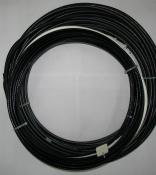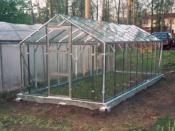Search
Login
Recommended
Spa pools. Types, features, characteristics
The spa industry has firmly entered our everyday life, due to the extremely high level of stress in the everyday life of a person living in the rhythm of a big city. The healing powers of warm water have been used by man for centuries to replenish vitality and energy, as they helped restore energy balance in a matter of hours. Spa pools, equipped with all necessary equipment to increase vital potential, are the main link not only in the spa industry, but also in rehabilitation and aesthetic medicine, one of the important directions of which is the restoration of vitality through the synthesis of the healing power of warm water and massage.
Content
- Spa hot tubs. Wellness effect
- Classification of spa pools. Portable spa pools video
- Stationary spa pools. Distinctive features
- Backflow spa pools
- Chemistry for spa pools
Spa hot tubs. Wellness effect
Spa hydromassage pools, the main purpose of which is hydrotherapy, which has multiple therapeutic effects on the most inaccessible points of the human body, are representatives of the hydromassage pool family, characterized by a complete cycle of water treatment and purification.

Relieving pain, improving blood circulation, relaxing and tonic effect are all characteristic of spa hydromassage pools, the principle of operation of which is based on the use of several nozzles that randomly change the direction of the water stream. Moreover, manufacturers have so carefully thought out the nozzle equipment system that the individual layout of its arrangement allows hydromassage at the most effective level. When choosing a spa pool, the price of which is directly dependent not only on its typical characteristics, but also on the equipment, you should pay attention to the location of the nozzle system, since the quantity, in this situation, is not a characteristic quality moment.

The development of the spa industry, as well as the multiple secondary areas of rehabilitation medicine, contributed to the formation of the classification of pools for their use, most accurately reflecting their functional characteristics.

Classification of spa pools. Portable spa pools
1. Portable spa pools, considered to be the founders of the stereotype that spa equipment is available only to cottage owners. They are the most famous type of spa pools. Pools belonging to this category are designed for installation on the street, or in any spacious room. Portable pools can be designed for eight seats, but large spa pools, the price of which is much higher than that for their small competitors, are large in weight and size, which can be a problem for owners of small apartments.

Sometimes such pools are characterized by the presence of wood or plastic cladding, which is more often the case with older versions. An important feature of such pools is the availability of equipment placed under the pool bowl, which greatly simplifies the installation process, the main essence of which is the supply of electricity. The pools are equipped with all necessary equipment for circulation and water purification, including a circulation pump, an ozone generator and filters, a hydromassage system, equipment for heating water, as well as various secondary options.

Inflatable spa pools are a common type of spa pools that still stand apart and do not have a specific place in the generally accepted classification of spa equipment.

Due to their mobility, enabling their autonomous location in any territory, it is advisable to attribute them to a portable type of pools. They are collapsible structures, the installation of which is possible on any site. The inflatable spa pool-jacuzzi differs from the usual inflatable pool in the presence of hydromassage functions, as well as filters necessary for continuous water treatment. Currently, intex inflatable spa pools are available to Russian consumers, which are very popular in the domestic market.
Stationary spa pools. Distinctive features
2. Stationary spa pools, also called recessed ones, experts propose to classify into two broad groups depending on the circulating water scheme used, which determines the everyday use of spa equipment. To be more precise, these are:
- skimmer built-in pools;
- overflow recessed pools;
A common feature for these types of pools is the installation method, which consists in installing the pool bowl on a metal frame, after which the entire structure is built into the floor and deepened into the podium. The type of use of the pool is determined by the installation of equipment that is carried out under the pool bowl or in the technical room located next door.

The use of skimmer hydromassage pools is practiced at home or in rooms characterized by a small cross and a minimum area where a change of water is allowed before each spa procedure. The design of these pools is characterized by small dimensions, and practically does not differ from that for a portable skimmer pool.

The overflow hydromassage pools are designed for operation in public areas, which are characterized by high traffic. Their design allows for a long time not to change the water, while its characteristics will remain at the highest level, no different from those that are characteristic of fresh water from a crystal source. A fundamental distinguishing feature of overflow pools is the presence of an overflow grate, which is necessary to remove excess water that flows over the grate into the gutters and then enters the treatment system. This system implies a number of measures, after the implementation of which the characteristics of water significantly increase. Filtration, ozonation, heating water to a well-regulated level is all that is needed to maintain the quality of water and increase its healing effect. After undergoing such a cyclic treatment, the purified water through the nozzles returns to the hydromassage structure.

Backflow swimming pools
3. The innovative development of manufacturers of hydraulic structures and their components has become swimming spa pools, which are a type of spa equipment equipped with a counter-current system and sections for hydromassage. Countercurrent spa pools can also be classified according to a variety of attributes, the main of which is bowl size and a range of additional options. Currently, manufacturers are offering swimming pool models that can interpret the course of the river, the intensity of which can be regulated depending on the wishes of the person engaged in rowing. Also on the market are models equipped with water simulators. In other words, the happy owners of backflow spa pools can not only enjoy the benefits of hydromassage, but also practice rowing without needing a stationary pool.

Swimming pools do not require a frequent change of water, as they are equipped with a high-power cleaning system and heated water. The change of water is mainly done once every six months, however, control of its chemical composition is an integral measure.

Chemistry for spa pools
Chemistry for spa pools does not fundamentally differ from that for ordinary frame or stationary water sources. Recently, however, manufacturers have been offering many universal chemicals to improve the characteristics of water, the use of which can simultaneously cope with a group of tasks to improve water parameters. One of these tools is AquaFinness, which comprehensively approaches the tasks and allows you to instantly clarify the pH of the water, cope with lime deposits on the pipes and heating elements of the spa pool, which extends the service life of almost three times.






